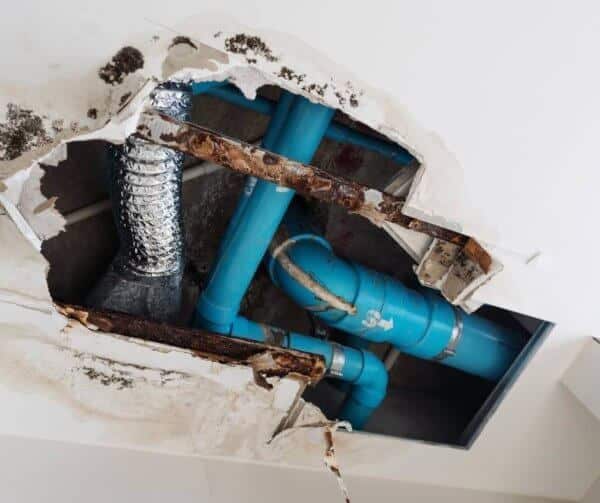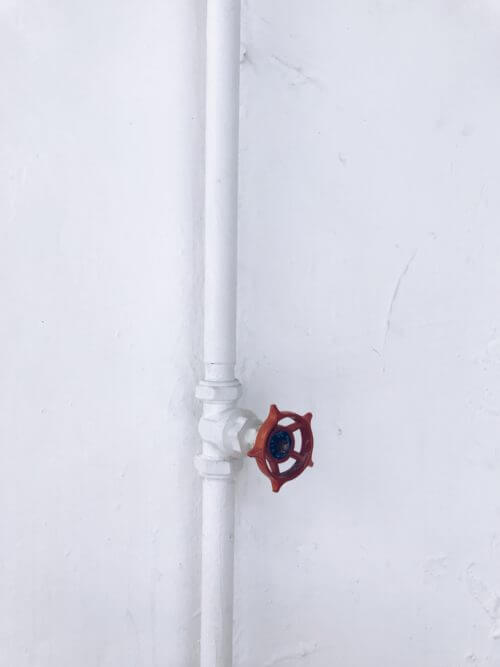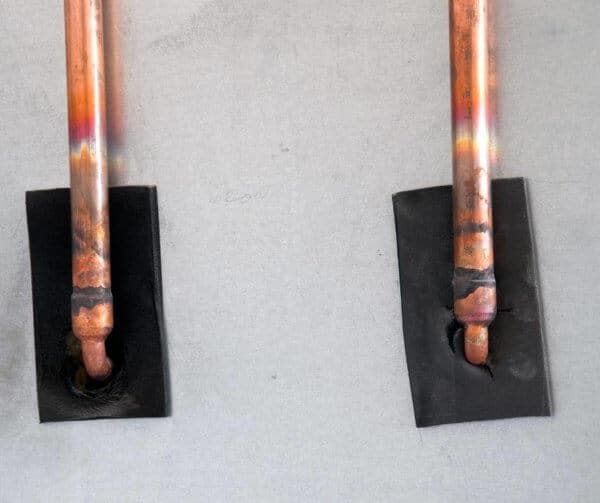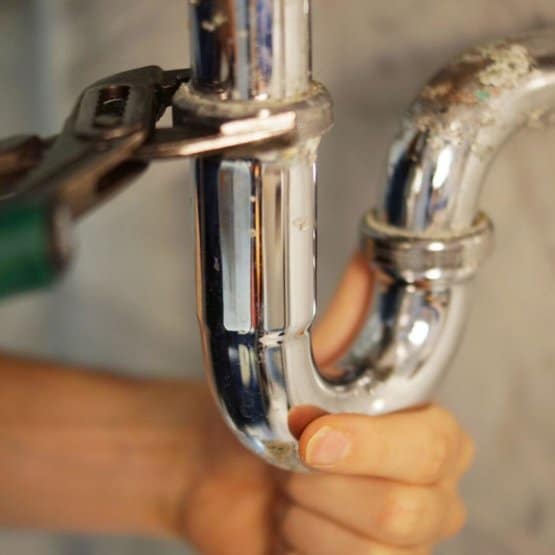how to fix water hammer
Do you know how to fix water hammer? Is this strange sound similar to pounding or thumping coming from your bathroom, kitchen, or basement last night? Don't worry, this is not a scene from horror movies, but it is definitely something that requires your attention.
We made it clear with this question you have an emergency with water hammer.
How did this even happen and how to fix water hammer?
When you shut off a faucet suddenly, or when your washing machine, dishwasher, or any other water-using appliance closes the water intake abruptly, metal pipes in your plumbing system bang loudly.
This further creates pressure in the pipes, which may result in serious pipe damage if the pressure reaches a too high level.
As we all want to avoid unnecessary costs and nerving, we are here to suggest 4 ways to fix water hammer without calling a plumber.
How to Locate the Source of Water Hammer?

You can't fix water hammer if you don't locate where is it coming from.
In order to do so, you should first measure the size and the length of the pipes in your household.
This will help you figure out where is the air pressure deadlock.
Yet, the most reliable sign to watch for is the sound.
It may seem funny, but you should follow the pounding, and it will lead you to the closest pipe to the critical point.
The source of water hammer is, however, most of the times in your basement or crawl space.
After locating it, here is what you can do to fix the water hammer and get rid of annoying sounds.
How to Fix Water Hammer in House?
1. Install an Air Chamber
One of the simplest methods for fixing hydraulic shock or water hammer is installing an air chamber.
It is a short segment of vertical pipe installed near the valves.
This creates an effect of air-filled pipe that acts as a tampon for the next time when water changes direction suddenly.
You may think you will need a plumber for this task.
However, even though a plumber would use ordinary pipes and fittings for fixing water hammer, you can purchase commercial air chambers that give the same effect, or capped pipes, and save some money.
When you shut off a faucet or other water valve quickly, it is up to the air chamber to compress temporarily and absorb the shock.
Otherwise, spreading of the pressure through the pipes will cause them to bang.
Even though many people install the air chamber somewhere near the washtub, it would be much wiser to install it at critical spots (and you know which ones are the most critical) in your home.
The only catch with the air chamber is that its function can cease from the moment when the water fills it completely.
That is why you should drain the entire water supply system periodically and restore the air chambers this way.
If you want to recharge the air chambers in your home, here is what you need to do:

- Shut off the main water valve in your home,
- Open the highest water faucet in the building,
- Now, open the lowest water faucet in the building. If you don't know where it is located, it is usually installed in the basement or in the front yard. You want to drain all the water from it and make some room for the air to get to the uppermost faucet. At the same time, air will get to the air chambers as well.
- You will notice when water stops flowing, and this is the sign to turn it off, while the uppermost faucet should stay open. Now it is the time to re-open the main valve. This will make the water rise through the system and fill the rest of the pipes with water, except for the air chamber that will remain full of air.
If you wonder what the goal of this process is, it is restoring the shock-absorbing capacity of the air chambers.
However, we want to prepare you for some unexpected situations here.
Sometimes minerals and other debris may clog the air chambers, but the good news is that you can clean them easily.
Just remove the caps and scour them out.
If you want to prevent this, you can install chambers larger in diameter than the main plumbing pipes in your house.
2. Secure Loose Pipes

You wouldn't believe that even mild shock waves can cause extremely loud banging in the pipes.
However, no matter of the sound, the cause of this is not that severe as it seems.
Actually, enough reason for pipes to cause such loud sounds is the fact they are not well secured.
Another great thing is that you can prevent water hammer in the early phase if you make small adjustments.
Sometimes the pipes are too loose, and all you should do is to tighten pipe straps.
If you want to prevent banging, it would be good to use foam pipe insulation and wrap it around the pipes.
However, you can't do this in all areas of your house.
The most approachable area is the basement, as pipes in here are usually more exposed and visible.
Insulation is a great solution for areas where plumbing pipe run through bored holes in framing members.
You want to cushion the pipes, but there is an option to install some pipe sleeves, as they act as a buffer.
You will also be able to notice if there are any loose hangers or stripes. If so, secure and tighten them.

Pipes cross studs or joints at a couple of places in your house.
It would be great to add some additional pipe straps or hangers here, as it will prevent pounding as well.
However, as we already mentioned this technique works best with milder and earlier phases of water hammer, severe one may cause damage to the pipes, and you will need another solution.
Tip: When securing metal plumbing pipes, make sure not to use dissimilar metals, but rather go for metal pipe hangers and straps.
This means galvanized steel straps and steel, in general, are a big no-no.
The thing here is that different metals induce electrolysis, a chemical reaction that causes corrosion of the metal.
If you have copper plumbing pipes, secure them with copper or plastic pipe hangers and straps.
3. Install a Water-Pressure Regulator

If none of the previous options worked, here is another advice on how to fix the water hammer.
We already mentioned that too high pressure of the main water pipe causes pounding noise in your home.
You may ask us now how to figure out when the pressure is too high.
Normal pressure varies between 30 and 55 pounds per square inch, and everything above this is considered as high pressure.
What is more, pressure above 100 pounds per square inch can damage your home appliances severely.
The solution for this is to install a water pressure regulator.
If possible, install it in the area where the main water supply enters your home.
What you may like is the fact a water-pressure regulator protects appliances, toilets, and fixtures from high water pressure.
After installing the regulator, set it to a pressure below 50 pounds per square inch, and – problem solved.
4. Install Mechanical Water Shock Arrestors

We left a bit more sophisticated form of absorbing the shock from water hammer for the end.
Air chambers are simply not practical in all cases, while water arrestors make a great alternative here, especially when it comes to commercial buildings.
Each water arrestor contains air bladder and spring, and their function is to absorb water movement and alleviate water hammer.
Another benefit of a mechanical water shock arrestor is that it doesn't need to be reloaded, which is the case with air chambers.
However, as there is a catch with everything, water arrestors have a limited life cycle and need to be replaced after its bladders wear out.
Water shock arrestors are easy to install as they have compression or screw-on fittings.
That means – you truly don't need a plumber to know how to fix water hammer.
What is more, you can integrate a water arrestor into washing machine valves or utility sink faucets.
If you can detect where the noise is coming from as close as possible, install the water shock arrestor on the hot water pipe nearest to the critical area.
In case you are still not getting results you need, try installing one more arrester close to the pipe coming out of the boiler.
When making a purchase, pay attention if the water hammer arrester you are about to buy is compatible with hot water and if it can bear high water pressure.
Bottom Line
As we don't want to jump to conclusions without making things completely clear, we will suggest you check the faucet once again.
If you still believe it is in good condition, there is no doubt water hammer is the one to blame for the noise.
One more certain sign you have a situation with water hammer is the fact it occurs when you turn the faucet off only, not when you turn it on.
Not only that water hammer and taping from your bathroom or kitchen can be very annoying, but it can also lose plumbing joints and brake pipes if you don't work on this problem in time.
However, this is not such a severe issue when you know which steps to undertake.
If you have been wondering how to fix the water hammer, we hope that this article gave you a couple of useful and good advice.
In the end, we told you how to fix water hammer with some basic tools without a plumber, which is a bonus, as this means you will save some money and secure things for the future.
FAQ
How to prevent water hammer?
There is no way to fully prevent water hammer.
However, there are some things you can do to lower the chances of water hammer appearing.
Here are some preventive measures:
- Reduce the water supply if you fit a pressure regulator
- Reduce the pipe's fluid velocity
- Use slow-closure faucets
- Utilize start-up and shut-down procedures
- Use an auto pump valve
- Add expansion loops or elbows to reduce the pipe length
What is the bad water hammer effect?
Water hammer causes serious pipe damage, especially if you don't fix it on time.
It can also damage pipe joint gaskets, as well as all other system components.
This stresses out your pipeline, and it can cause significant damage to your entire plumbing.
How long do water hammer arrestor last?
Most water hammer arrestors last up to three years.
Once this time passes, you should consider replacing them.
Of course, the best option is to read the product instructions, as different models can last a different while.
You should contact your plumber if you think your water hammer arrestors need to be replaced any time soon.
how to fix water hammer
Source: https://plumbertip.com/how-to-fix-water-hammer/
Posted by: sheleybestione.blogspot.com

0 Response to "how to fix water hammer"
Post a Comment